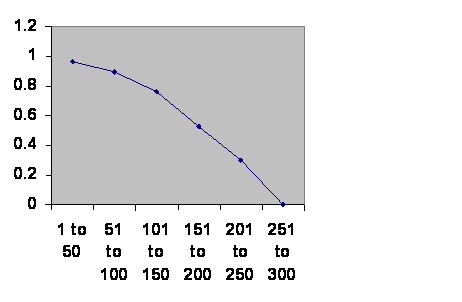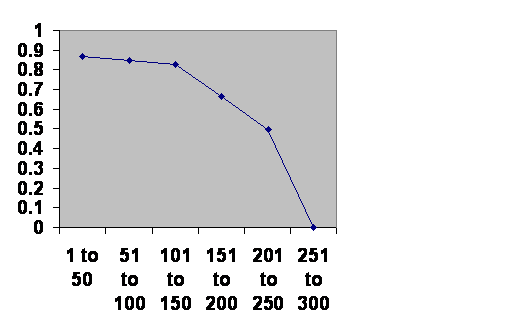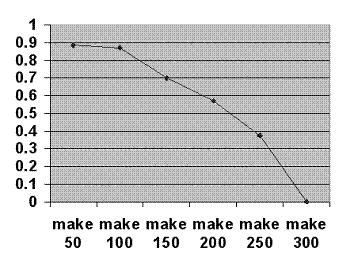January 19, 2015
nobabies.net
Jim Davies
2201 Dunton Tower
Carleton University
1125 Colonel By Drive
Ottawa, Ontario
K1S 5B6
CANADA
jim@jimdavies.org
Dear Professor:
You suggest whether expectation is riveting depends on how riveting the expected thing is, suggesting ballet as not riveting. I rather like ballet; it’s traditional, and anything other people have loved I tend to love if for that reason alone. But assuming I hated it, look at it this way: the ballet itself would merely involve a few minutes of day dreaming, which I do a lot of anyway. But the expectation of the ordeal would give me days of anguish and self pity.
As I promised, I do not recognize your description of religion. Sure there is a social element, which I’ll get to. But here might be a pretty typical prayer session: “All right, God, let’s go over what we can all agree on. 1) There is a universe. What are the chances of that? Let’s say one in a thousand. 2) There is stuff in the universe. There’s no reason to expect that. So let’s say another one in a thousand. 3) The universe changes – another extreme unlikelihood, but give it a chance of one in a thousand again. 4) One moment seems to be related somehow to nearby moments; no reason for that a priori but give it another one-in-k; there are rules. 5) Were the rules absolute then any moment would specify all other moments and there might as well be only one moment, but the rules are kind of squishy with an element of probability. Another 1/k? 6) There is this consciousness thing. It doesn’t follow from any of the above? 1/k. So there is a one in sextillion chance that – Sorry, you’re English aren’t you; that would be a thousand trillion chance – of this happening by chance, and the whole thing seems to accomplish nothing except to produce an environment in which it is logically defensible to assert that there are moral principles. Then there are a few physical constants, just enough to make it possible for living things that could make those judgments or at least observe them and that’s all. There could be any number of other laws, but there aren’t. It is as if there were a principle of parsimony at work, and that’s the most improbable of them all, and then you pretend you don’t exist. HOW STUPID DO YOU THINK WE ARE?” The answer of course is the question to which my first question was the answer. So I go on. “Obviously the Great Guilt Guzzle is the point of reality. And your (Go ahead. Deny you had anything to do with scripture. Do you even read your own stuff? Talk about trademark voice: “and the spirit of god moved upon the face of the waters”… “In the year that king Ussiah died I saw also the Lord sitting upon a throne, high and lifted up, and his train filled the temple” … “And there were in the same country shepherds abiding in the field …” Three writers centuries apart writing in different languages? Give me a break.) scripture blames our preoccupation with placing blame on us. Nice one. Any fool can tell the Tree of Knowledge of Good and Evil was only a minor distraction. The big one is the Tree of Life. And I’ve got that one. I understand it. It’s simple. It’s every bit as important as the story implies. Nobody else knows it. NOW WHAT DO I DO WITH IT?” The answer, “Do you have anything to say before we get started?” is singularly unhelpful.
I promised I’d resolve that graph of the survival of Egyptian regimes. We play the same game with lower Mesopotamia: Again I’m attaching a copy of the letter so the graphs come through.
Survival experience of lower Mesopotamia. Information taken from R. H. Carling, The World History Chart, International Timeline Inc. Vienna, VA 1985. The experience of southern Mesopotamia. The vertical axis is the chance of an empire of any age continuing to rule locally for another 50 years. The horizontal axis is the ages of the empires.

The line not only accelerates downward with a three hundred year brick wall at the end, it is very clean. In other words that upward trend in survival in Egypt, that part that made sense, is the exception. The three hundred year wall is the real bit. Oh, there’s more,
Take the survival of Rome, classical Mayans and Anasazi of Chaco Canyon. Information taken from BBC History of Rome online and Joseph A. Tainter The Collapse of Complex Societies, Cambridge University Press, Cambridge, eighteenth printing, 2009.
 .
.
The difference between the curves is trifling, well within the limits of the noise you would expect with such small numbers. Three hundred years is again obvious.
Newton put together some numbers in his Revised History of Ancient Kingdoms. I pulled what dates I could out and graphed them the same way.
Newton’s data on survival of dynasties in the ancient world. The horizontal axis is the age of the dynasties. The vertical axis is the proportion that, having reached one age, the dynasty will continue another 50 years. “Make” means the dynasties survive to that age.

All right, what brings down dynasties must always be the same thing. It can’t be outside the population, which would give a horizontal line, and it can’t be inside, which would give a rising line, so it must be the very fact of a large cooperating population. If you get a big population, more than a few hundred, and have them mating at random, they’ll die out. Well what did you expect? (I’d shout, but I reserve that for people who really get me ticked off.)
Here’s a link if you care for more data, but what you’ve already seen brooks no other explanation.
http://www.nobabies.net/A%20January%20summary%20for%202015.html
So what does this mean for religion? Religion can serve many purposes, but one thing is vital and that’s children. Marry within a congregation and the community can survive. If everybody marries outside of their kindred group the community will die. It takes a few generations. Now what do I do with the knowledge?
Sorry. God couldn’t handle that one. I’m asking too much. But what do you think?
Sincerely,
M. Linton Herbert
There have been 122 visitors over the past month.
Home page.

 .
. 